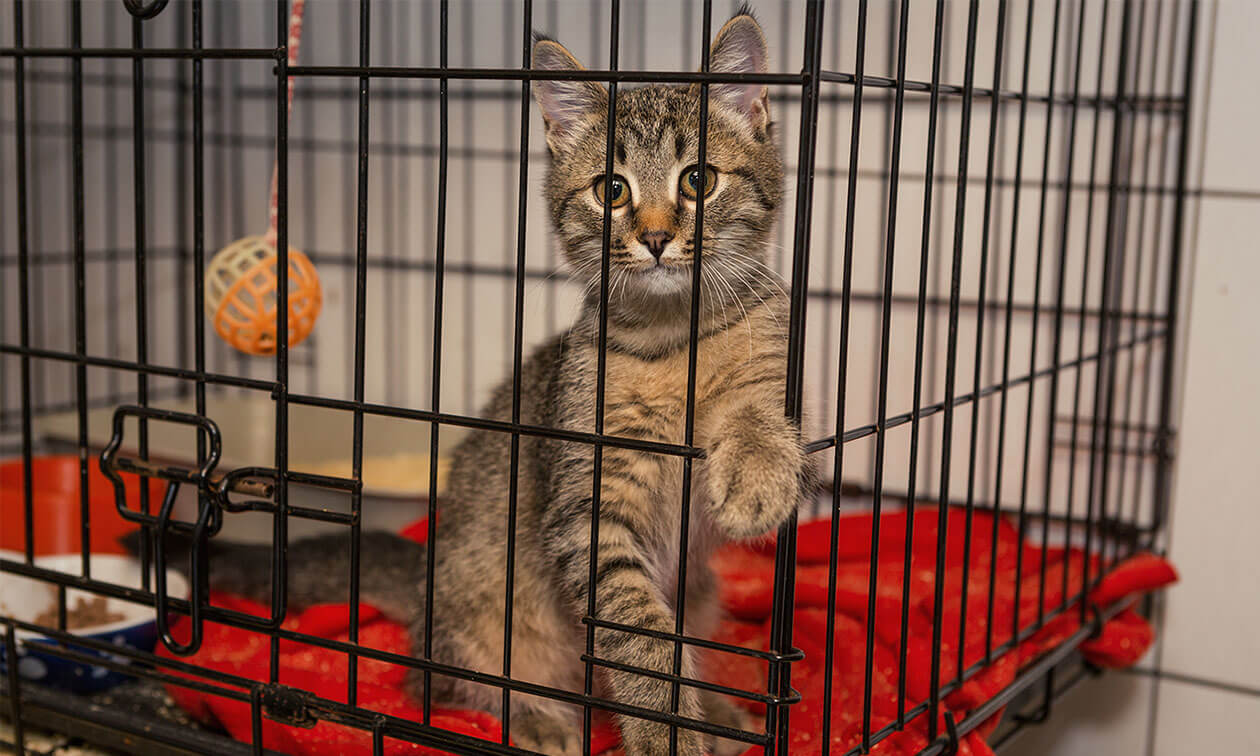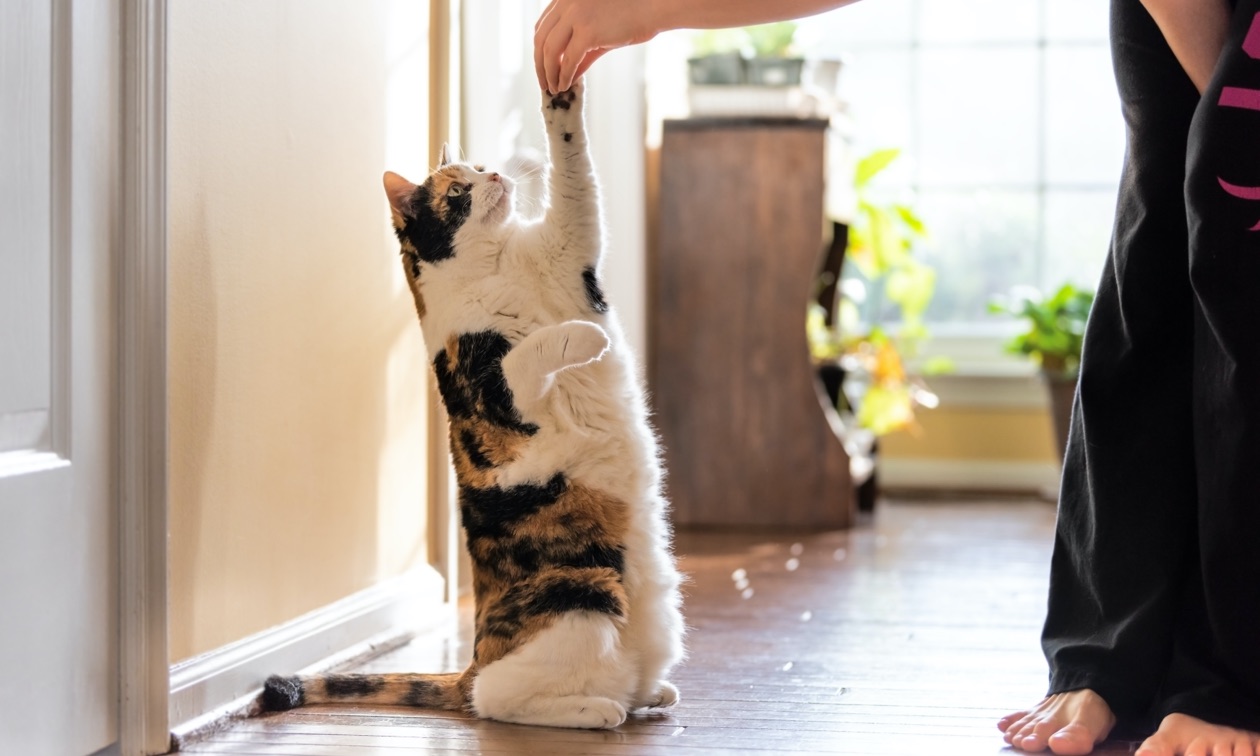We usually think about crate training for dogs, but can you crate train a cat? Is there any reason to? While cats might not need crate training for the same reasons dogs do, teaching your cat to be comfortably confined in a crate is a good idea. After all, you never know when this will come up in their lives — long-distance moves, medical bedrest, taking your cat into the veterinarian, hospitalized at the veterinarian, and other things can pop up that will require your cat to spend time crated. The better they feel about it, the better you’ll feel too.
Why Would Your Cat Need To Be Kept in a Crate (or Kennel)?
The words “crate” and “kennel” are often used interchangeably, but there is a difference. Crates are meant to be portable, whereas kennels are meant to be stationary. Most cats will need to be in a crate in their lifetime, but it is less likely they will need to be in a kennel. For this article we will be talking about crates, but if your cat would ever need to be in a kennel, it would be the same process.
Dogs are crate trained for reasons like providing them with a sense of security and as part of house training. Many dogs use their crates as part of daily life, but your cat’s experience with a crate or kennel will be quite different. Cats can hide under the bed for security, and they do not need to be confined for crate training. Although, there are reasons your cat may need to spend some time in a crate, including:
- At the veterinary clinic or groomer. Cats need to be transported to the vet office and groomer in a carrier for their safety. Sometimes they may need to stay in a crate while at the vet or groomer.
- When being boarded. Many people board their cats when traveling or during stressful events at home like construction.
- Long-distance trips in a vehicle. Whether you’re on vacation or moving to a new home. For your cat’s safety, they should be transported in a crate or carrier.
- As part of the recovery process after medical procedures. Activity restriction is common after surgery or injury. Since cats can jump a good six feet in the air, they often have to be crated to control their movement.
- In emergencies or times of extreme stress. An extremely stressed or fearful cat can often be aggressive. Crating them can offer protection for both you and them. If you’re experiencing flooding or other emergencies requiring a quick evacuation, your cat will be safer and easier to manage in a crate than hiding in the closet or under the bed.
Why Crate Train Your Cat?
For any of these situations, whether planned or unexpected, you can't pop your cat into a crate or kennel and hope for the best. It’s important to remember that confinement is extremely stressful for most cats. Having choice and control is what makes a cat feel safe. As soon as that’s taken away, their defenses go up. They’re on high alert because they’re being forced to stay in one spot with no way to escape, so crating your cat without any desensitization can be extremely upsetting and scary.
How to Crate Train Your Cat
The good news is that cat crate training is similar to getting them comfortable in a carrier. It’s all about a very slow desensitization process where you take baby-steps from hanging out outside the crate to inside with the door open, then closing the door, then gradually extending the amount of time the door is closed, and so on. Throughout the process, you’re rewarding your cat each time they calmly progress through a step, and you’re being super careful not to push past their comfort zone at any point. If they show signs of stress or anxiousness, that just means you pushed a little too far, too fast so back up and slow down. Take a look at our article on How to Get Your Cat into Their Carrier for step-by-step instructions.
Do Cats Need To Be Crated Overnight?
If you’ve had dogs, you may have kept them in their crate overnight. (This is generally related to potty training.) Since cats have a handy litterbox right there in the home, overnight crating isn’t something you need to do with your cat. There may be extreme circumstances where cats are crated at certain times, such as staying at a hotel. This method is best done under the supervision of a certified feline training and behavior specialist. It’s usually a short-term tool as you work through a behavior modification plan to address the issues. Other than that, there usually isn’t any need to crate your cat overnight or really at all during the course of their everyday lives. It’s more for specific times and situations like those outlined above. As always, if you have any questions about crate training for your cat, please reach out to your veterinarian and they will be able to provide more guidance.
ZPC-02536





